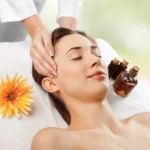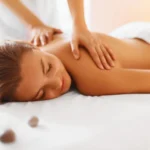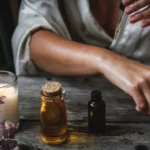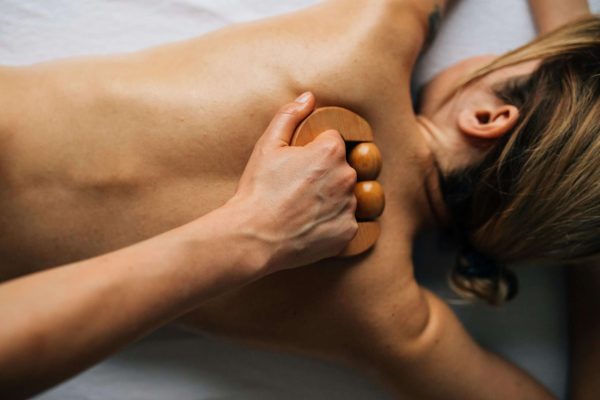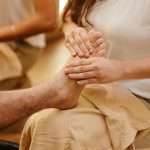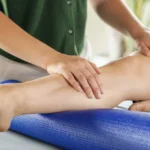Ayurvedic massage is an ancient healing technique used for centuries to promote physical and mental health. It is a type of massage that uses herbal oils, pressure points, and yoga postures to treat specific ailments and improve overall wellbeing. It is believed to balance the body’s three doshas – vata, pitta and kapha – and help promote healing and relaxation. In this article, we will discuss what ayurvedic massage is, its benefits, and how to get started.
What is Ayurveda?
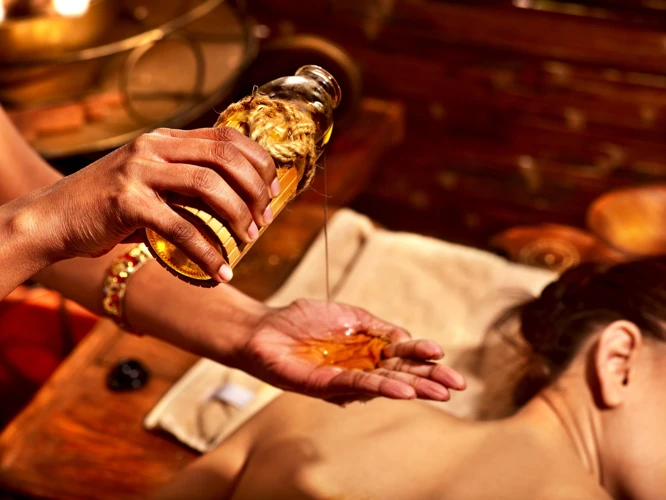
Ayurveda is a holistic system of natural healing that originated in India over 5,000 years ago. It is based on the belief that health and wellness depend on a balance between the mind, body, and spirit. Ayurveda uses a variety of techniques, such as diet, yoga, massage, and herbs, to restore and maintain balance.
What is Indian Massage?
Indian Massage is the traditional massage technique used in Ayurveda. It involves gentle kneading, stroking, and pressing of the body’s pressure points to release tension and promote relaxation. This type of massage is not only beneficial for physical health, but also for mental and emotional well-being.
What is Ayurvedic Massage Therapy?
Ayurvedic Massage Therapy is a form of Indian Massage that integrates the principles of Ayurveda into the massage session. This type of massage can help to reduce stress, improve circulation, and increase energy levels. It is believed to be especially beneficial for those who suffer from chronic pain and stress-related conditions.
What is Kerala Massage?
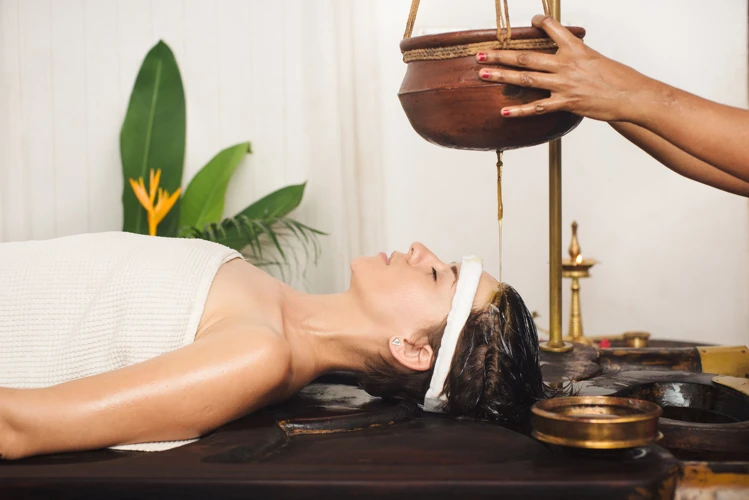
Kerala Massage is an ancient Ayurvedic healing technique originating from India. It is a full-body massage using warm herbal oils, which are believed to nourish the body and increase circulation. The massage also includes a range of traditional massage strokes and stretching that are deeply relaxing and help to relieve muscle tension and promote wellbeing. This type of massage has been used for centuries to promote relaxation, reduce stress and improve overall wellbeing. It is believed to help stimulate the mind and body and reduce the effects of ageing. Kerala Massage is also known for its ability to improve the functioning of the nervous system, improve circulation and digestion, and reduce fatigue. It is a popular massage therapy for those seeking relief from stress and tension.
What Can I Expect At An Ayurvedic Massage?
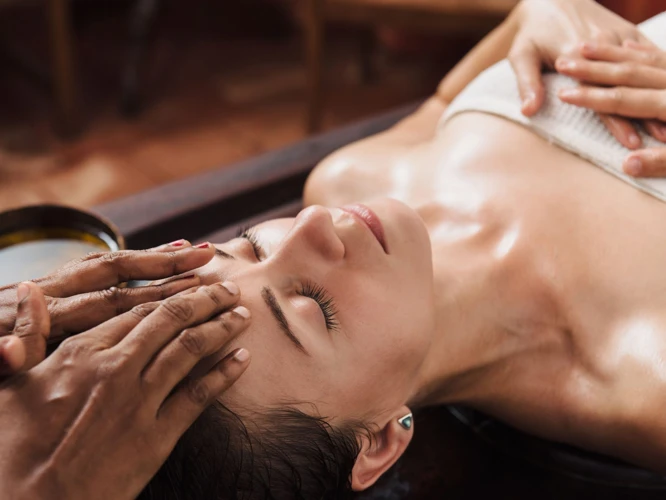
Ayurvedic massage, also known as Abhyanga, is an ancient holistic healing technique. It combines massage, pressure points, and herbal oils to harmonize the body, mind, and spirit. During an Ayurvedic massage, clients can expect to receive a gentle massage, pressure point therapy, and the application of specific herbal oils to improve overall health and well-being.
Techniques Involved
The techniques used in an Ayurvedic massage include gentle massage, pressure points, and the application of specific herbal oils. Gentle massage helps to relax the body and mind, while the pressure points are used to stimulate the body’s energy and healing. The combination of these techniques helps to restore balance and harmony to the body.
Benefits of Ayurvedic Massage
The benefits of Ayurvedic massage are numerous. Regular sessions can help to improve circulation, reduce stress, improve sleep, and enhance overall health and wellbeing. This type of massage is beneficial for many chronic conditions such as arthritis, back pain, headaches, and fatigue.
Different Types of Ayurvedic Massage
Ayurvedic massage comes in many forms. Depending on the type of massage, different techniques and oils can be used to achieve the desired outcome. Some of these include Swedish massage, deep tissue massage, aromatherapy massage, and hot stone massage.
Overall, Ayurvedic massage is a holistic healing technique that can be used to improve overall health and wellbeing. By combining massage, pressure points, and herbal oils, it helps to restore balance and harmony to the body. If you are looking for a way to improve your overall health, consider trying an Ayurvedic massage.
Preparation Before an Ayurvedic Massage
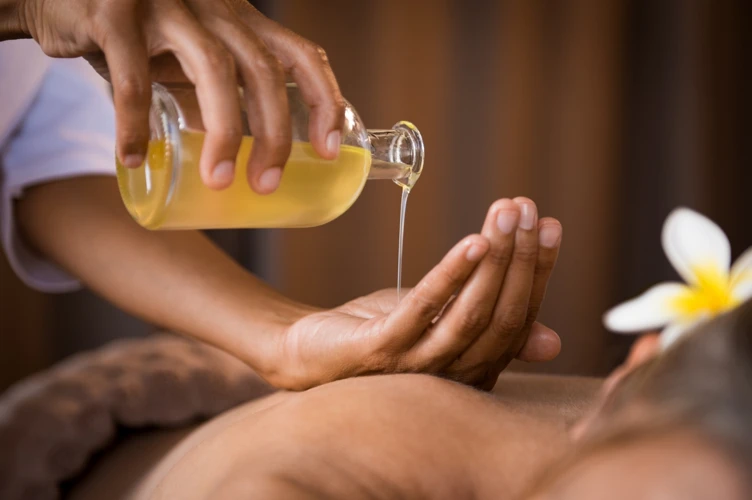
- Choose comfortable clothing: Wear loose, comfortable clothing for the massage. This will ensure that you are comfortable throughout the massage and that the massage therapist can move your body freely.
- Hydrate: Drink plenty of water before and after the massage. This will help your body to flush out the toxins that are released during the massage.
- Eat light: Have a light meal before your massage. Avoid heavy meals as they will make you feel sluggish during the massage.
- Avoid caffeine: Avoid stimulants such as caffeine and alcohol before the massage as they can make you feel restless during the massage.
- Set your intention: Before your massage, take a few moments to set an intention for the massage. This can be anything from a desire to relax to a specific goal such as reducing pain or improving your flexibility.
What can you expect at an Ayurvedic massage? During the massage, your massage therapist will use a variety of techniques such as massage, stretching, and pressure point work. They may also use warm herbal oils to help relax your muscles and nourish your skin. The massage will be tailored to your individual needs, helping to restore balance and harmony to your body and mind.
Aftercare
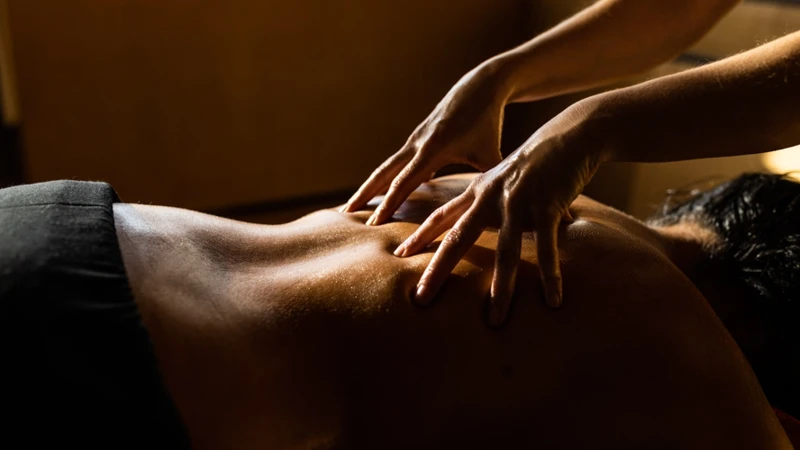
Ayurvedic massage requires proper aftercare for ideal results. It is important to drink plenty of water after the massage to flush out any toxins that have been released during the massage. Avoid strenuous or heavy physical activity for at least 24 hours after the massage, as it can disrupt the healing process. To maximize the benefits of the massage, it is best to follow a healthy diet, practice yoga, and get plenty of rest. Additionally, some practitioners may recommend specific oils, herbs, or other natural remedies to use after the massage to help the body heal.
Those who are interested in a more comprehensive Ayurvedic experience can look into Kerala massage, a specialized type of Ayurvedic massage that is known for its holistic approach to soothing the body and mind. Kerala massage uses a blend of traditional Ayurvedic massage techniques along with steam therapy and herbal treatments to achieve balance and relaxation.
Kerala Ayurvedic Massage
- What is Kerala Ayurvedic Massage? Kerala Ayurvedic Massage is an ancient form of healing massage originating from India. The massage is based on the principles and techniques of Ayurveda, which is an ancient Indian system of medicine. The massage is believed to help balance the body’s three humors or doshas, which are vata, pitta, and kapha. It is also believed to be beneficial in relieving stress, tension, and pain, as well as improving circulation and promoting relaxation.
- Benefits of Kerala Ayurvedic Massage Kerala Ayurvedic Massage is believed to have many physical, mental and emotional benefits. It is believed to help improve circulation, reduce pain and tension, and boost the immune system. It is also believed to help with detoxification, and improve skin tone and texture. It can also help to improve mental clarity and mood, and reduce stress and anxiety.
- Techniques Used in Kerala Ayurvedic Massage Kerala Ayurvedic Massage involves a variety of massage techniques, including gentle kneading, light stroking, circular motions, and tapping. The massage is usually done with warm herbal oils, and is customized to meet the specific needs of the individual. It is important to note that massage is not a replacement for medical treatment, and should be used in conjunction with other therapies.
Kerala Ayurvedic Massage has been used for centuries to promote health and well-being, and can be a great addition to any wellness routine. By combining the principles of Ayurveda with massage techniques, this ancient healing technique can help to improve physical, mental and emotional health.
Frequently Asked Questions
What is the Difference Between Ayurvedic Massage and Other Types of Massage?
Ayurvedic massage is a holistic healing technique that has been used for centuries in India. It is based on the principles of Ayurveda, an ancient Indian system of medicine that is rooted in the belief that a healthy mind and body are essential for overall wellbeing. Unlike other massage techniques, Ayurvedic massage focuses not only on the physical body, but also on the mental and spiritual aspects of a person. Here are the differences between Ayurvedic massage and other types of massage:
- Time-frame: Ayurvedic massage is typically a long-term treatment, focusing on nurturing and healing the body over a period of time. Other types of massage are more focused on providing immediate relief and relaxation.
- Techniques: Ayurvedic massage incorporates a range of massage techniques, such as marma therapy, abhyanga, and shirodhara. Other types of massage may use different techniques, such as Swedish massage or deep tissue massage.
- Goals: The goal of Ayurvedic massage is to balance the body’s energies, restore balance, and promote overall health and wellbeing. Other types of massage focus more on providing relief from pain, stress, and tension.
- Herbs and Oils: Ayurvedic massage often incorporates the use of herbs and oils to promote healing and balance. Other types of massage do not typically use herbs and oils.
Ayurvedic massage is a powerful healing technique that can provide a range of physical, mental, and spiritual benefits. Its holistic approach to healing makes it a unique and powerful form of massage that can truly transform your life.
What are the Benefits of Ayurvedic Massage?
1. Restores Balance in the Body: Ayurvedic massage helps to restore balance in the body by eliminating toxins, improving circulation, and promoting relaxation. This helps to improve the overall functioning of the body and can lead to improved overall health.
2. Reduces Stress and Anxiety: Ayurvedic massage is known to reduce stress and anxiety levels which can lead to improved mental health. This can also help to reduce symptoms of depression and fatigue.
3. Enhances Immune System: Ayurvedic massage can help to improve the body’s natural immune system by increasing circulation and eliminating toxins. This can help to improve overall health and reduce the risk of illness.
4. Improves Circulation: Ayurvedic massage is known to improve circulation throughout the body. This can help to deliver oxygen and other essential nutrients to the cells, which can improve the overall functioning of the body.
5. Relieves Joint Pain and Muscle Soreness: Ayurvedic massage can help to relieve joint pain and muscle soreness by loosening tight muscles and increasing range of motion. This can help to improve mobility and reduce the risk of injury.
6. Improves Skin Health: Ayurvedic massage can help to improve skin health by increasing circulation and eliminating toxins. This can help to reduce the risk of acne, wrinkles, and other skin issues.
How Often Should I Receive Ayurvedic Massage?
The frequency of Ayurvedic massage depends on the individual’s overall health and well-being. Generally, it is recommended to receive massage treatments every 4-6 weeks to maintain balance and prevent the onset of any health issues. For those with chronic health conditions, regular treatments may be necessary or even beneficial. It is important to consult with an Ayurvedic practitioner to determine the best frequency for your individual needs.
Are there any side effects of Ayurvedic Massage?
Generally, Ayurvedic massage is considered safe and has few if any side effects. However, there are a few things to consider when considering this type of massage.
- Allergies: People with allergies to certain herbs or oils used in Ayurvedic massage should avoid this type of massage.
- Skin irritation: It is possible to develop skin irritation due to the oils or herbs used in Ayurvedic massage.
- Blood clotting: Ayurvedic massage may affect the body’s ability to clot blood, so people with existing clotting disorders should not receive Ayurvedic massage.
- Stress: People who are prone to stress and anxiety should use caution when receiving Ayurvedic massage, as it can increase stress levels.
- Overdoing it: It is important to listen to your body and not overdo it with Ayurvedic massage. It is best to follow the instructions of the massage therapist and not push yourself too hard.
Overall, Ayurvedic massage is a safe and effective way to relax and improve your overall health. However, it is important to consult with a qualified practitioner before beginning any massage therapy.
How Can I Find a Qualified Ayurvedic Massage Practitioner?
To find a qualified Ayurvedic massage practitioner, ask for referrals from friends and family or research local practitioners. When searching for a practitioner, look for someone with a recognized certification in Ayurvedic massage, such as a Certified Ayurvedic Practitioner (CAP), and check their qualifications and references. It’s also important to make sure they are licensed and insured. Additionally, it is beneficial to read reviews and learn about the practitioner’s experience and approach, as well as the techniques they specialize in.
Conclusion
Ayurvedic massage is an ancient healing technique that helps to restore balance to the body, mind, and spirit. It is a holistic approach to health that incorporates massage techniques, herbal therapies, and bodywork. Benefits of this therapy include improved physical and mental well-being, relaxation, improved energy levels, and relief from pain and stress. Ayurvedic massage is suitable for people of all ages and can be used as a preventative or restorative therapy.
References
- Ayurveda.com: Ayurvedic Massage
- MindBodyGreen: What Is Ayurvedic Massage? 6 Benefits Plus How to Find a Practitioner



